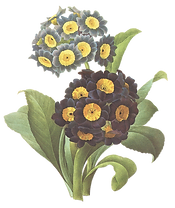Ashes to Ashes (and other garden uses)
- Cynthia Thomas
- Feb 14, 2018
- 3 min read

What do ashes, books, trees and toothpicks have in common?
They are all various forms of wood of course, but also, they were all once living organisms.
While we may not associate the tree in the yard with the cherry table in our dining room and the very food we serve on it, the carbon chain that connects them is closer than you think. We see one as fixed and one as temporary, but in fact, life is a cycle and we are simply a moment on its continuum.
Many scientists describe life as we know it as ‘carbon-based’. Fundamentally, without carbon, life on earth would not be possible (bigpictureeducation.com). This means that we find carbon in everything from cell membranes to hormones to DNA.
Carbon can transform from solid, to gas (carbon dioxide) to water (carbonate).
I find it fascinating that so long ago, the author of Genesis sums up the carbon cycle of life with the profound truth; “By the sweat of your face you shall eat bread, till you return to the ground, for out of it you were taken; for you are dust, and to dust you shall return” (3:19). The writer may not have understood that all living things start and end with what we now call the sixth element on the periodic table, “C” carbon, however there was an acknowledgment of the connectedness of living things – ourselves included.
It’s an idea that is seldom realized in our modern lives, until we talk about climate change and carbon-footprint – the idea that human consumption of carbon (mostly through fossil fuel burning) has an effect on the earth’s atmosphere.
But connected we are and connected we will always be.
That’s one of the things I love most about gardening. I love understanding the elements in ways I never did on a chart, in a class, in a school. I love understanding that through photosynthesis carbon transforms from its gas form to plant form. If a tree is cut down and burned, the carbon chains break (causing heat energy) and turn to smaller components, namely ashes and carbon dioxide. Those ashes can then be spread on the garden soil, enriching it with phosphorous, potassium, calcium, boron and other elements that growing plants need.
Wood ash is especially beneficial in areas where you have deciduous trees and shrubs, including fruit trees, vegetables (root crops), bulbs, annuals, perennials and deciduous vines. (Avoid using any wood ash around acid loving plants such as rhododendrons, camellias, azaleas, blueberries, junipers and conifers.)
Wood ashes can be used very successfully in the vegetable garden (except in the area where you plan to grow potatoes). Mix the ash thoroughly with your soil. Tomatoes seem to benefit especially from soil that has been mixed with a small quantity of wood ash. Apple trees, too, love this treatment.
Not everyone has an orchard, a woodlot, or a major wood-burning habit. But even a bit of ash from the occasional fire on cold nights makes a good end-of-winter gift for a favorite tree.
Here are seven more ways to put those sooty discards to good use:
Block garden pests. Spread evenly around garden beds, ash repels slugs and snails.
Melt ice. Wood ash adds traction and de-ices without hurting soil or concrete underneath.
Pump up tomatoes. For the calcium-loving plants, place 1/4 cup right in the hole when planting, or make a “tea” by soaking ash in water and using as you would fertilizer.
Clean glass fireplace doors. A damp sponge dipped in the dust scrubs away sooty residue.
Make soap. Soaking ashes in water makes lye, which can be mixed with animal fat and then boiled to produce soap. Salt makes it harden as it cools.
Shine silver. A paste of ash and water makes a dandy nontoxic metal polisher.
Hide stains on paving. This Old House technical editor Mark Powers absorbs wet paint spatters on cement by sprinkling ash directly on the spot; it blends in with a scuff of his boot.
“Ashes to Ashes, Dust to Dust”
Did you know this famous phrase does not appear in the Bible but first appeared in the English Burial Service of the 1662 Book of Common Prayer:
“We therefore commit this body to the ground;
earth to earth, ashes to ashes, dust to dust.”























Comments